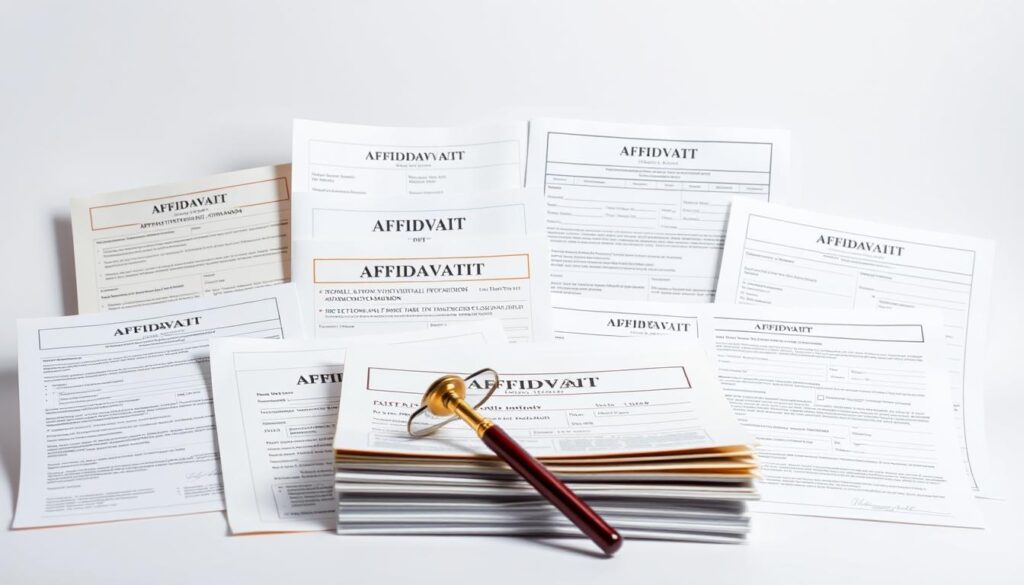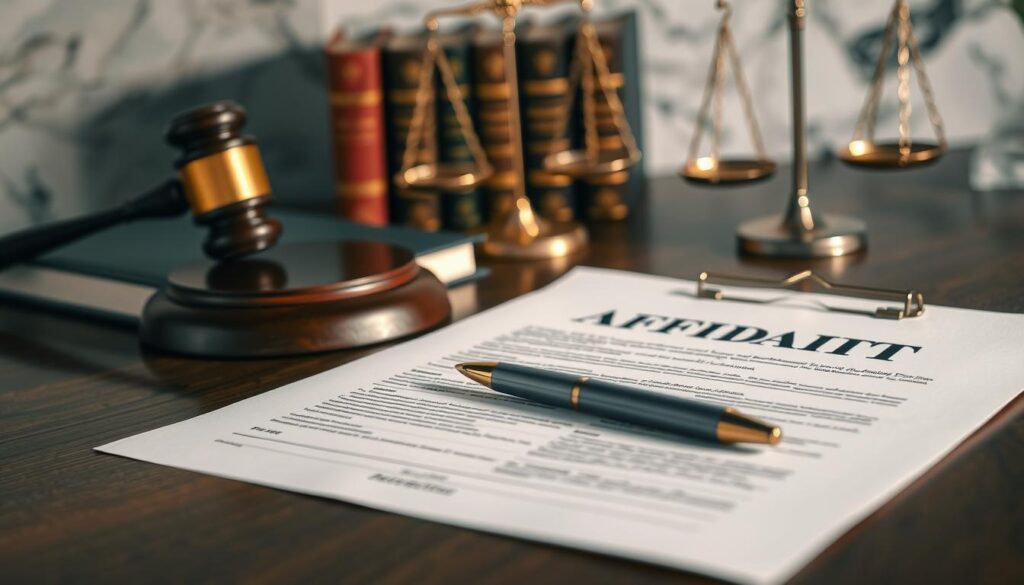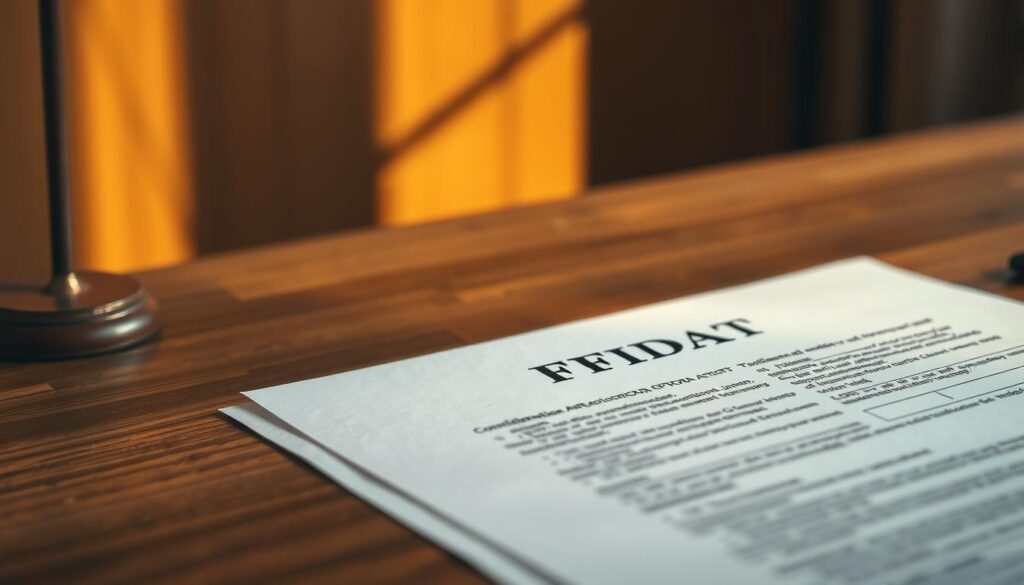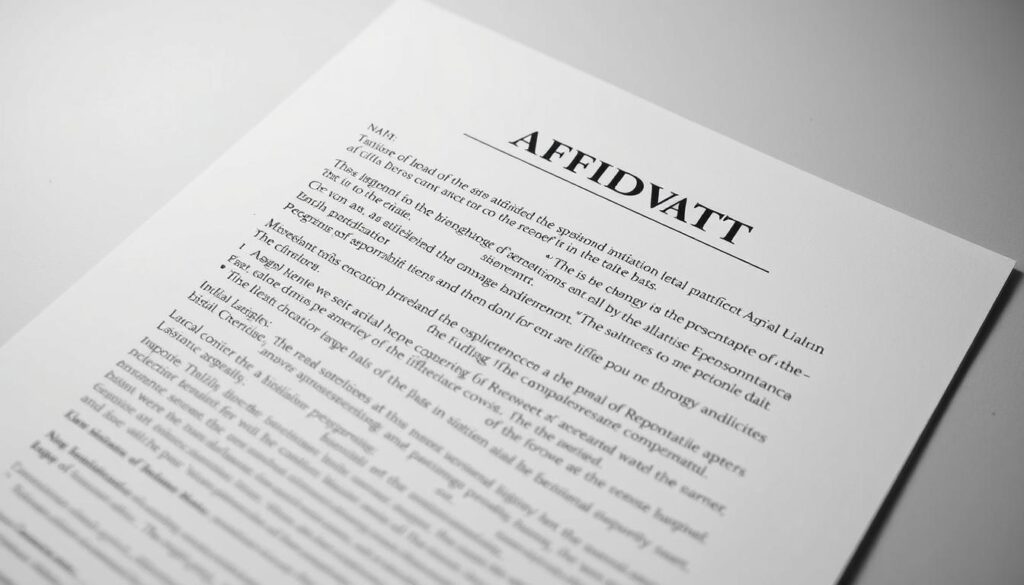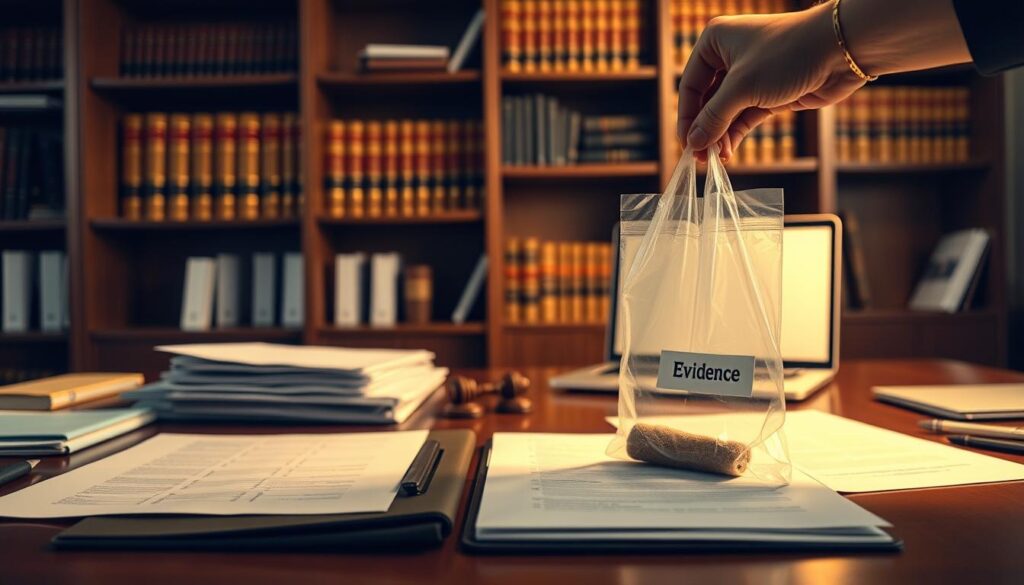Affidavit Categories
Surprising fact: a false statement under oath can bring up to seven years’ imprisonment under Section 193 IPC — a stark reminder of the weight that a sworn statement carries.
You will learn how a clear, compliant affidavit supports your case and links to the petition that frames the dispute.
Start by stating facts in the first person and limit content to what you have personal knowledge of. Courts may order proof by affidavit under Order XIX Rule 1 CPC, so the structure and contents matter.
Keep the document concise. Number paragraphs, present exhibits clearly, and include a verification clause that follows Order XIX Rule 3. That clause ties you personally to the truth of every line.
Be precise and honest. Distinguish between direct knowledge and belief, and give reasons when you state belief in interlocutory matters. This approach protects your credibility and the court process.
Key Takeaways
- Use first person and limit statements to your knowledge.
- Structure the document with clear headings, numbered paragraphs and exhibits.
- Ensure the verification clause matches Order XIX Rule 3.
- Avoid repeating material from the petition; make the affidavit stand alone.
- False evidence is a criminal offence; accuracy matters greatly.
Understanding affidavits in Indian courts and why they matter today
An affidavit is your sworn written evidence that ties specific assertions directly to your personal experience. It functions as a concise, tested statement that courts use when a discrete point in a case must be proved quickly and reliably.
What an affidavit is and when courts require it
You must treat this document as sworn evidence: a statement by the deponent limited to what they can prove from personal knowledge. When a court requests proof by affidavit under Order XIX Rule 1 CPC, ensure your contents address only the facts the judge has asked the parties to prove.
Legal basis: Order XIX Rules 1 & 3 CPC and key rulings
Order XIX Rule 3 confines statements to what the deponent knows, though interlocutory matters may allow beliefs if you state reasons and sources. Authorities like Purushottam Jog Naik, Padmabati Dasi, Virendra Kumar and A.K.K. Nambiar require clear disclosure of sources and a precise verification clause.
Risks of false evidence: Section 193 IPC and consequences
Never sign unverified material. Section 193 IPC makes intentional false evidence a crime punishable by imprisonment. The high court and Supreme Court expect you to separate what you know, what you believe with grounds, and which records or persons supplied the information.
“Verification anchors responsibility and lets the court test the genuineness of each paragraph.”
How to Draft an Affidavit for Court Cases in India: a step-by-step guide

Begin with the court heading, case number and parties so the registry links your statement to the correct file.
Document header and party caption
Place the court name, city and the allotted suit or petition number at the top. Then set the party caption as Plaintiff versus Defendant, using the same cause title as the main file.
Title, deponent and opening
Use the title AFFIDAVIT and identify the deponent by name, parentage, age and address. Add the affirmation line: do solemnly affirm and declare as under.
Statement of role, knowledge and petition reference
State your status (plaintiff or defendant) and confirm you are conversant with the relevant facts of the case. Record that the petition or plaint was drafted under your instructions, read over in a language you understand, and incorporate its contents by reference to avoid repetition.
Verification and attestation
Draft a verification that specifies which paragraphs are true to your personal knowledge, which rest on information with identified sources, and which are belief with reasons for interlocutory matters.
- Number paragraphs sequentially; confine each paragraph to one point.
- Annex exhibits, mark them clearly and refer to them in the body.
- Sign, date the verification and present the affidavit for attestation before a Magistrate or authorised officer.
Tip: keep the contents concise and precise so the judge can test each statement easily.
Compliance, accuracy, and filing practices for your affidavit document
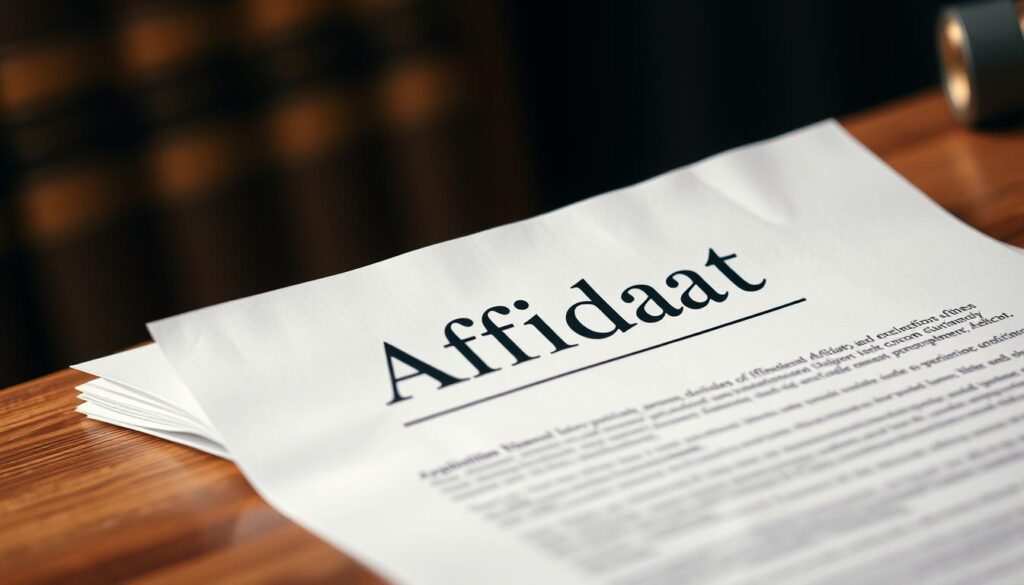
Clear verification and source disclosure make your sworn statement usable and credible before the high court.
Case law guidance
Padmabati Dasi, Virendra Kumar and A.K.K. Nambiar
Padmabati Dasi held that a general averment of truth is insufficient. You must state what you know, what you believe and why, and what you were advised with grounds.
Virendra Kumar requires naming the person, record or correspondence that supplies information not from your own knowledge. A.K.K. Nambiar treats verification as a substantive test of genuineness.
Common drafting mistakes that weaken your statement
Mixing argument with evidence or repeating the entire plaint dilutes the impact of your facts. Omnibus verifications and missing attestation details invite the court to ignore parts of your filing.
- Proofread dates, names and numbers against the court record.
- Label exhibits, paginate and keep originals for production.
- Separate belief-based paragraphs and state reasons clearly.
| Ruling | Focus | Practical effect |
|---|---|---|
| Padmabati Dasi | Specific verification | Divide paragraphs into known, believed (with reasons), advised |
| Virendra Kumar | Source disclosure | Name persons, records or correspondence for traceability |
| A.K.K. Nambiar | Verification as safeguard | Ensure verification allows the court to judge genuineness |
Note: keep the affidavit in the first person and link each statement to the petition record where relevant.
Conclusion
A precise, sworn statement closes the loop between what you claim and what the court can verify.
You must ensure each paragraph links to your personal knowledge or a named source. Keep the contents focused on facts, with clear dates, names and exhibit references.
Treat the verification clause as the backbone of the document. Sign or affirm before an authorised officer, check seals and retain copies for future hearings.
Accuracy and compliance with Order XIX Rule 3 CPC and leading rulings protect your position and guard against penalties under Section 193 IPC. For a practical checklist and further guidance, see this beginners’ guide.
FAQ
What is an affidavit and when will a court ask for one?
An affidavit is a sworn written statement you make on oath before an authorised officer. Courts ask for it when a statement of fact must be placed on record, for example with a plaint, petition or interlocutory application. It serves as evidence and must state clearly what you know personally and what you believe on information from other sources.
Which rules and judgments govern affidavit content and verification?
Affidavits in civil matters follow Order XIX Rules 1 and 3 of the Civil Procedure Code. Key rulings from the Supreme Court and various High Courts clarify requirements on verification, source of knowledge and the limits on hearsay. You should cite relevant case law if the point is contested.
What are the consequences of making false statements in an affidavit?
Knowingly giving false evidence can attract criminal liability under Section 193 of the Indian Penal Code and may lead to perjury proceedings. False affidavits also weaken your case and invite adverse orders, including costs and contempt in serious situations.
What must appear in the header of an affidavit?
The header must show the correct court name, the title of the case (party names), and the suit or petition number. Use the caption style required by the High Court or trial court registry where you file the paper.
How should you identify the deponent and state status in the affidavit?
Begin with the word “AFFIDAVIT”, then state your full name, age, address, occupation and role in the suit (for example plaintiff or defendant). Clearly link each paragraph to facts within your personal knowledge or to information you have received and believe to be true.
How do you distinguish facts from information received and belief?
Use separate paragraphs. State facts in the first person where you have direct knowledge. Where you rely on documents or third‑party information, say so and identify the source. If you express belief, label it as belief and explain the basis for that belief.
What does the verification clause need to contain to meet Order XIX Rule 3?
The verification should be a short clause declaring that the contents are true to your knowledge and belief, signed by you and dated. It should state the place of signing and confirm that the affidavit is filed in support of the named petition or plaint, matching the caption and cause title.
Who must attest the affidavit and where is it sworn?
You must swear or affirm the affidavit before a Magistrate, Notary Public, Commissioner for Oaths, or any officer authorised by the court. The attesting officer will sign and stamp the document and note the date and place of attestation.
Can you use a model format for facts and verification?
Yes. A concise model places the facts in numbered paragraphs, attaches exhibits with clear exhibit markings, and ends with a verification clause and signature. Ensure the model aligns with the local court practice direction and the applicable rules cited earlier.
What drafting errors commonly weaken an affidavit?
Common mistakes include vague language, mixing facts with argument, failing to identify the source of information, excessive hearsay, incorrect verification, missing exhibits or improper attestation. Each error can result in rejection or reduced evidentiary value.
How should you reference case law such as Padmabati Dasi or A.K.K. Nambiar?
Use brief citations within the affidavit or an accompanying affidavit of counsel to establish legal points on verification and sources. Keep references concise and directly linked to the paragraph they support to assist the judge in locating authority quickly.
What are good practice tips for presenting interlocutory facts?
For interlocutory applications, prioritise clarity and contemporaneous documents. Number paragraphs, attach time‑stamped exhibits, avoid speculation, and state why the relief sought requires urgent consideration. That enhances credibility at the hearing.
Are there special rules for affidavits filed in High Courts versus trial courts?
Core verification rules remain the same, but High Courts often have local practice directions regarding formatting, paper size and certification. Check the specific High Court rules and recent practice notices before filing.


